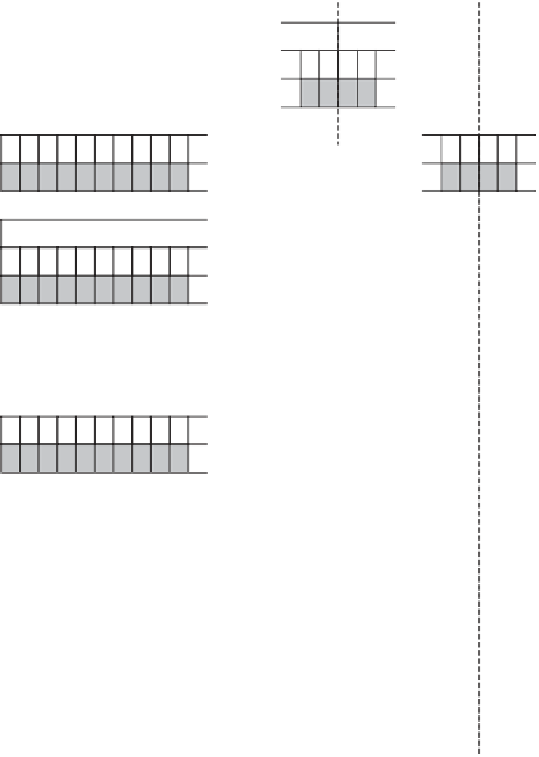Global Positioning System Reference
In-Depth Information
0
10 ms
20 ms
4ms
100 ms
1ms
Symbol
Sec. code
Pri. code
d
0
d
1
E5a-d
18 19
0
1
0123456 7
89
0123456 7
89
0
1
Sec. code
Pri. code
98 99
E5a-p
Symbol
Sec. code
Pri. code
d
0
d
1
d
2
E5b-d
0123456 7
89
Sec. code
Pri. code
0123456 7
89
9899
0
1
E5b-p
d
0
d
1
d
2
d
3
d
4
d
5
d
6
d
7
d
8
d
9
Symbol
Pri. code
E6C-d
0
1
2
3
4
49
0
Sec. code
Pri. code
E6C-p
d
0
d
1
Symbol
Pri. code
d
2
L1F-d
0
1
Sec. code
Pri. code
24
0
L1F-p
d
k
n
One time primary code
period (N
Secondary code nth chip
Message stream kth symbol
chips length)
p
Figure 10.6
On-board synchronization between code subcarrier waveforms, code chips, and
data symbols.
the GALILEO frame structure, aiming at increasing the transmission rate efficiency
for the E5b and L1F signals in particular.
The subframe synchronization field is a fixed pattern (UW) that allows the
receiver to achieve synchronization to the data field boundaries. The synchroniza-
tion pattern is applied as uncoded data symbols at the transmitter.
The navigation message bit train, excluding the synchronization word, is rate
1/2 convolutional encoded with a FEC code. Therefore, the symbol rate is twice the
original data rate. The convolutional coding has constraint length 7 and is charac-
terized by polynomials
G
1
=
171 (octal) and
G
2
=
133 (octal), with a convolutional
logic arrangement as illustrated in Figure 10.8.
As shown in Figure 10.7, each subframe contains a CRC parity block consisting
of 24 bits covering the frame data field (excluding the synchronization pattern and
the tail bits). To compute the CRC, the subframe is written as a polynomial in
x
,


























Search WWH ::

Custom Search